FOR DARING THE U.S. and others to withdraw their aid, President Rodrigo Duterte has been called a “psychopath”. For those whose way of thinking has been systematically warped by colonialism and neo-colonialism, it is plain madness. As a poor country, why would we shun the “altruism” of rich countries like the US?
On the contrary, the US would rather not stop its aid program here. Since our nominal independence from the US’s colonial rule 70 years ago, patronage through economic and military aid has been a key component of enduring US imperialist domination and plunder of the Philippines.
Beyond ‘goodwill’
Data from the US Agency for International Development (USAID) show that from 2001 to 2014, total economic aid to the Philippines reached more than US$1.94 billion (in current prices). Total military aid during the same period reached almost US$566.11 million. That’s a combined US$2.51 billion in 14 years. Annually, the US disbursed US$138.95 million in economic aid and US$40.44 million in military aid or a combined $179.39 million every year from 2001 to 2014.
For 2015, preliminary USAID data show that the US disbursed $180.62 million in economic aid. There’s no 2015 data yet on military aid from the USAID online database. Reports, however, say that US military assistance for the Philippines was about US$50 million last year that will reportedly rise to US$79 million in 2016, on top of another US$42 million from the new US-Southeast Asia Maritime Initiative.
Further, note that US assistance to the Philippines has grown quite substantially under President Barack Obama and his declared US pivot to Asia. From 2010 to 2014, US economic aid increased by almost 15% in real terms annually. Military aid grew by almost 8% a year during the same period.
(US economic and military aid data since 1946 can be generated from USAID’s reports & data)
And we’re counting just the bilateral aid from the US. The US is also a major contributor to multilateral bodies like the World Bank and agencies of the United Nations (UN), which provide development aid to the Philippines as well.
That’s a lot of aid money that Duterte would be foregoing if the he will really spurn American patronage.
But as mentioned, there’s more to foreign aid than the simple altruism of donors. Aid, especially US aid, is used not for development cooperation but to advance the interests and agenda of the donor and deepen their patron-client relationship with the aid recipient. It is an effective neocolonial tool to foster continued dependence and subservience, and steer domestic policy making in directions that the donor wants. Lastly, aid is also a means for the US to directly create profit-making opportunities for their transnational corporations (TNCs).
Education, health, disaster relief
Remember how the US used the public education system as an integral part of their colonization campaign in the Philippines? It was far more successful in making Filipinos subservient to the colonizers than using purely military might. Colonial education was so effective that many Filipinos could not imagine life without the US. Just look at the reaction to Duterte’s stance on independent foreign policy.
It continues to this day through, among others, the use of foreign assistance. Classified by purpose, the largest bilateral US aid disbursed to the Philippines in 2015 was in Primary Education at US$25.33 million. Almost half of this amount, US$12.49 million, went to the Basa Pilipinas project of the USAID. Through this project, the US develops and distributes teaching and learning materials, English books and reading materials, etc. for local teachers to use for their Grades 1-3 pupils. Another US$5.35 million in US aid was also disbursed for Higher Education in 2015. (See Chart 1)
The second biggest chunk of US aid disbursement last year went to Material Relief Assistance and Services with US$20.37 million. They also disbursed US$3.84 million for Disaster Prevention and Preparedness; US$1.92 million for Emergency Food Aid; and more than US$1 million for Relief Coordination, Protection and Support Services.
The US has been using disaster relief to justify and expand their military presence in disaster-prone countries like the Philippines. The controversial Enhanced Defense Cooperation Agreement (EDCA), for instance, was justified using the pretext of humanitarian aid and disaster relief. American troops can base in military facilities here so they can preposition not just their weapons and war machines but also “humanitarian relief supplies”. (Read for instance, US Secretary of State John Kerry’s recent statement on EDCA made last July 2016)
Family Planning also traditionally gets a big portion of US aid with disbursement reaching US$17.08 million in 2015. Related sectors also got significant amounts such as Reproductive Health Care (US$3.94 million) and Population Policy and Administrative Management (US$0.43 million).
Population control has long been a strategy of US imperialism in the Philippines. In 1974, the USAID and Central Intelligence Agency (CIA), among others, produced the “Kissinger Report”. It said that population growth threatens US access to the natural resources of poor countries. A large population of youth must also be controlled because they are most likely to challenge US imperialism. The Philippines is one of 13 countries identified in the Kissinger Report as primary targets of US-led population control efforts.
Public health is another major sector that the US has been long supporting in the country. In 2015, the US disbursed US$16.04 million in aid for Tuberculosis Control and more than US$0.90 million for STD Control including HIV/AIDS. A productive and efficient (and, of course, cheap) labor force is one of the primary resources that US imperialism exploits for super profits. Control of infectious diseases like TB and AIDS helps ensure an efficient workforce, which poor countries with weak public health systems due to imperialist plunder and underdevelopment could not afford.
Plus, big US pharmaceutical companies that have monopoly over patented drugs used in these health programs are assured of markets. In the Philippines, for instance, the anti-TB campaign is a partnership between USAID and Johnson & Johnson, an American pharmaceutical and consumer goods giant.
Aid and policymaking
But the biggest impact of US aid in the Philippines is on how national economic policies and priorities are determined because of it.
Obama, for instance, introduced the Partnership for Growth (PFG) initiative. It is an aid program participated in and coordinated by the USAID, State Department, Millennium Challenge Corp. (MCC) and other US agencies as well as the World Bank, International Monetary Fund (IMF) and various UN bodies.
Through the PFG, the US deepens its role in national policy making such as through the five-year Joint Country Action Plan (JCAP), which identified priority areas for policy reforms in the Philippines. These include trade and investment liberalization, deregulation, effective enforcement of contracts with private business (such as those engaging in public-private partnership or PPP), as well as fiscal and judicial reforms.
An example of how US steers internal policy-making is the PFG’s centerpiece program in the Philippines, which is the $433.91-million grant from the MCC. The MCC is a highly conditional aid and requires the Philippines to, among others, maintain so-called “economic freedom” to continue receiving the grant.
One of the indicators of economic freedom, as designed by the MCC, is the Trade Policy Indicator. It measures the country’s openness to international trade based on average tariff rates and non-tariff barriers (e.g. trade quotas, production subsidies, government procurement procedures, anti-dumping, local content requirements, etc.) to trade. The “Compact” or agreement between the Philippine government (as represented then by the Aquino administration) and MCC is that the latter may suspend or terminate the grant if the country fails to reverse its policies that are inconsistent with the Trade Policy Indicator and other indicators designed by the MCC.
Also part of the implementation of the PFG is The Arangkada Philippines Project (TAPP) of the USAID and the American Chamber of Commerce (AmCham). Through the USAID-funded TAPP, AmCham is pushing for 471 specific recommendations that promote the interest of foreign corporations in the country through greater liberalization, deregulation, privatization and denationalization. These are contained in the comprehensive advocacy paper “Arangkada Philippines 2010: A business perspective” prepared by the Joint Foreign Chambers of Commerce in the Philippines (JFC), of which AmCham is a key member.
Under the TAPP, the JFC has been producing Legislation Policy Briefs that identify broad recommendations for Congress and the Executive. Among the many proposals of the JFC is the lifting of constitutional restrictions on foreign investments through Charter change (Cha-cha).
All these are in preparation for the country’s future membership in the US-led Trans-Pacific Partnership (TPP) agreement. The TPP is an ambitious free trade deal and the latest campaign of US imperialism to further deepen and consolidate its economic domination in Asia Pacific in the face of a rising China. Just last March 2016, the US Chamber of Commerce, with funding from USAID under the PFG’s five-year US$12.84-million Trade-Related Assistance for Development (TRADE) project, released its “readiness assessment” of Philippine membership in the TPP.
The said report examined the “consistency of the country’s existing policy framework with the agreement’s requirements, and the implied changes that may be necessary if the Philippines is to meet these requirements”. As expected, one of the “implied changes” is liberalization through Cha-cha. (The full report may be downloaded here)
Military patronage
Lastly, the US employs military aid not to modernize the Armed Forces of the Philippines (AFP) but to maintain its influence and control over our military. US military aid mostly comes in the form of Foreign Military Financing (FMF). Under the FMF, the US provides grants and loans to help the Philippines buy US-made weapons and defense equipment as well as acquiring defense services and military training.
In 2014, US$50 million in FMF was disbursed by the US to the Philippines out of the total US$57 million in military aid that year. The Philippines is traditionally one of the largest recipients of FMF among all US allies. It ranked fifth in 2014 in terms of FMF behind Egypt, Israel, Pakistan and Jordan. The country also accounted for 64% of US FMF in East Asia and the Pacific. (Data here)
However, military items that the country gets under the FMF and other US military aid programs are either surplus or second-hand and antiquated military articles. They are also not actually given for free but are sold at a discount (with a portion of the amount shouldered or waived by the US through the FMF).
Examples include the five-decade old US Coast Guard vessels (“Hamilton-class cutters”) that the US Navy has retired and sold to the Philippines. Since 2012, the Philippines has already bought two of these decommissioned ships for about US$25 million – and a third one is expected soon – through the FMF, Foreign Military Sales (FMS) and Excess Defense Article (EDA) programs.
The weapons systems of the ships have also been removed by the US prior to their turnover to the Philippine Navy. The country had to separately purchase from the US the vessels’ weapons and guns as well as additional technology including radar system, anti-ship missile system, etc. US military aid thus also means more business for the US military industrial complex.
Aside from FMF, other US military aid programs in the Philippines include counter-narcotics, military education and training, cooperative threat reduction, and counter-terrorism fellowship program. (See Chart 2)
Along with annual military exercises under the Visiting Forces Agreement (VFA), military aid fosters complete dependence of the AFP on US military technology, hardware and expertise. It also helps justify the continued presence of American troops in the country. But despite decades of US military patronage, the AFP remains one of the weakest and least modernized in the region. The Abu Sayyaf that the US has long been using to legitimize their military presence in the country persists and continues to terrorize the people.
Mutual respect, sovereignty
Foreign aid is not necessarily bad. It is, in fact, an important element of cooperation among countries to promote development. But as the case of US aid in the Philippines illustrates, aid could also be used to perpetuate the skewed relationship between the donor and recipient, between the colonial master and colony.
Such unequal, oppressive and exploitative relation between the US and the Philippines is the real reason why the country is underdeveloped and Filipinos are starving. If the Duterte administration rejects US aid to pursue a truly independent foreign policy and nurture development cooperation with other countries based on mutual respect and sovereignty, then we are already taking the initial steps to address the underlying causes of our poverty and hunger. IBON Features
The article was first posted on this site.

![FOR DARING THE U.S. and others to withdraw their aid, President Rodrigo Duterte has been called a “psychopath”. For those whose way of thinking has been systematically warped by colonialism and neo-colonialism, it is plain madness. As a poor country, why would we shun the “altruism” of rich countries like the US? On the contrary, the […]](https://www.altermidya.net/wp-content/uploads/2019/09/US-Aid-and-sovereignty_cartoon.jpg)




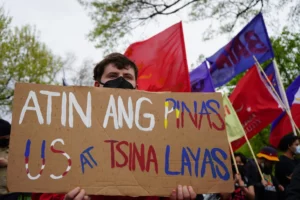
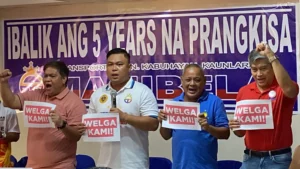
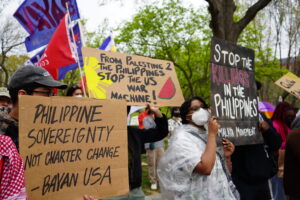

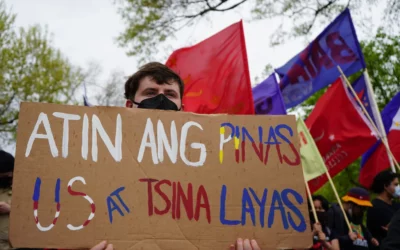
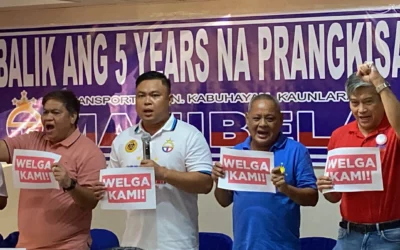
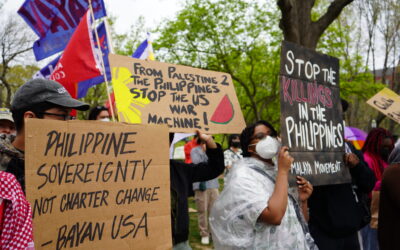
0 Comments